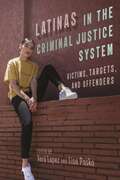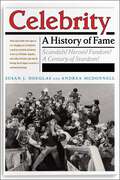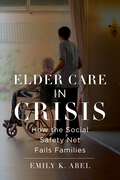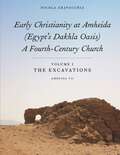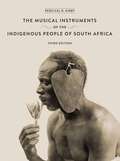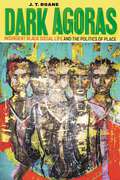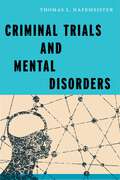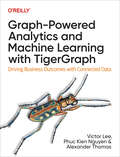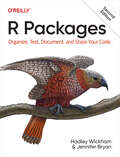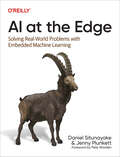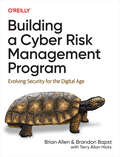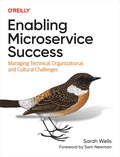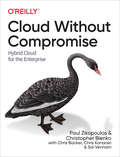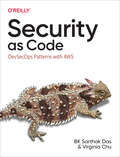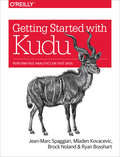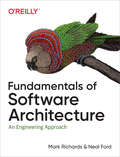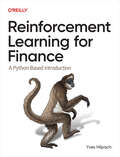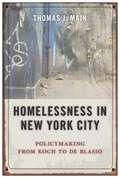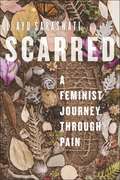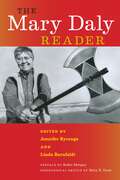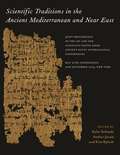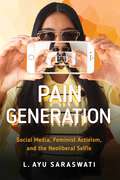- Table View
- List View
Latinas in the Criminal Justice System: Victims, Targets, and Offenders (Latina/o Sociology #18)
by Vera Lopez and Lisa PaskoHow Latina girls and women become entangled in the criminal justice systemDespite representing roughly 16 percent of incarcerated women, Latina women and girls are often rendered invisible in accounts of American crime and punishment. In Latinas in the Criminal Justice System, Vera Lopez and Lisa Pasko bring together a group of distinguished scholars to provide a more complete, nuanced picture of Latinas as victims, offenders, and targets of deportation. Featuring Cecilia Menjívar, Lisa M. Martinez, Alice Cepeda, and others, this volume examines the complex histories, backgrounds, and struggles of Latinas in the criminal justice system. Contributors show us how Latinas encounter a variety of justice systems, including juvenile detention, adult court and corrections, and immigration and customs enforcement. Topics include Latina victims of crime and their perceptions of police officers; the impact of the US “crimmigration” system on undocumented Latina women; and help-seeking among Latina victims of intimate partner violence. Additionally, key chapters highlight the emergence of legal reforms, community mobilization efforts, and gender-sensitive alternatives to incarceration designed to increase equitable outcomes. Lopez and Pasko broaden our understanding of how gender, ethnicity, and legal status uniquely shape the experiences of system-impacted Latina girls and women. Latinas in the Criminal Justice System is a timely and much-needed resource for academics, activists, and policymakers.
Celebrity: A History of Fame (Critical Cultural Communication #13)
by Susan J. Douglas Andrea McDonnellThe historical and cultural context of fame in the twenty-first centuryToday, celebrity culture is an inescapable part of our media landscape and our everyday lives. This was not always the case. Over the past century, media technologies have increasingly expanded the production and proliferation of fame. Celebrity explores this revolution and its often under-estimated impact on American culture. Using numerous precedent-setting examples spanning more than one hundred years of media history, Douglas and McDonnell trace the dynamic relationship between celebrity and the technologies of mass communication that have shaped the nature of fame in the United States.Revealing how televised music fanned a worldwide phenomenon called “Beatlemania” and how Kim Kardashian broke the internet, Douglas and McDonnell also show how the media has shaped both the lives of the famous and the nature of the spotlight itself. Celebrity examines the production, circulation, and effects of celebrity culture to consider the impact of stars from Shirley Temple to Muhammad Ali to the homegrown star made possible by your Instagram feed. It maps ever-evolving media technologies as they adeptly interweave the lives of the rich and famous into ours: from newspapers and photography in the nineteenth century, to the twentieth century’s radio, cinema, and television, up to the revolutionary impact of the internet and social media.Today, mass media relies upon an ever-changing cast of celebrities to grab our attention and money, and new stars are conquering new platforms to build their adoring audiences and enhance their images. In the era of YouTube, Snapchat, and reality television, fame may be fleeting, but its impact on society is profound and lasting.
Elder Care in Crisis: How the Social Safety Net Fails Families (Health, Society, and Inequality #2)
by Emily K. AbelExplains why there is a crisis in caring for elderly people and how the COVID-19 pandemic exacerbated itBecause government policies are based on an ethic of family responsibility, repeated calls to support family members caring for the burgeoning elderly population have gone unanswered. Without publicly funded long-term care services, many family caregivers cannot find relief from obligations that threaten to overwhelm them. The crisis also stems from the plight of direct care workers (nursing home assistants and home health aides), most of whom are women from racially marginalized groups who receive little respect, remuneration, or job security. Drawing on an online support group for people caring for spouses and partners with dementia, Elder Care in Crisis examines the availability and quality of respite care (which provides temporary relief from the burdens of care), the long, tortuous process through which family members decide whether to move spouses and partners to institutions, and the likelihood that caregivers will engage in political action to demand greater public support. When the pandemic began, caregivers watched in horror as nursing homes turned into deathtraps and then locked their doors to visitors. Terrified by the possibility of loved ones in nursing homes contracting the disease or suffering from loneliness, some caregivers brought them home. Others endured the pain of leaving relatives with severe cognitive impairments at the hospital door and the difficulties of sheltering in place with people with dementia who could not understand safety regulations or describe their symptoms. Direct care workers were compelled to accept unsafe conditions or leave the labor force. At the same time, however, the disaster provided an impetus for change and helped activists and scholars develop a vision of a future in which care is central to social life.Elder Care in Crisis exposes the harrowing state of growing old in America, offering concrete solutions and illustrating why they are necessary.
Early Christianity at Amheida: Volume I, The Excavations (Amheida VII) (ISAW Monographs #16)
by Nicola AravecchiaAn archaeological, historical, and art historical study of a remarkable early church excavated at Amheida in Egypt's Dakhla OasisEarly Christianity at Amheida (Egypt’s Dakhla Oasis): A Fourth-Century Church. Volume 1: The Excavations is an archaeological, historical, and art historical study of a remarkable basilica-church excavated at Amheida in Dakhla Oasis. This church, excavated between 2012 and 2023, dates to the fourth century CE and therefore is among the earliest purpose-built churches in Egypt. It also contains one of the oldest, if not the oldest, excavated Christian funerary crypts in the country. The church at Amheida thus offers a wealth of new data on early Christianity in Egypt, particularly with respect to the earliest phases of Christian art and architecture and burial customs. Aravecchia presents a systematic treatment of the stratigraphy, building techniques, materials, features, architecture, decoration, and finds of the church, carefully contextualized in the early Christianity of the late antique Great Oasis and Egypt more broadly.
Becoming Human: Matter and Meaning in an Antiblack World (Sexual Cultures #53)
by Zakiyyah Iman JacksonWinner, 2021 Gloria E. Anzaldúa Book Prize, given by the National Women's Studies AssociationWinner, 2021 Harry Levin Prize, given by the American Comparative Literature AssociationWinner, 2021 Lambda Literary Award in LGBTQ StudiesArgues that Blackness disrupts our essential ideas of race, gender, and, ultimately, the humanRewriting the pernicious, enduring relationship between Blackness and animality in the history of Western science and philosophy, Becoming Human: Matter and Meaning in an Antiblack World breaks open the rancorous debate between Black critical theory and posthumanism. Through the cultural terrain of literature by Toni Morrison, Nalo Hopkinson, Audre Lorde, and Octavia Butler, the art of Wangechi Mutu and Ezrom Legae, and the oratory of Frederick Douglass, Zakiyyah Iman Jackson both critiques and displaces the racial logic that has dominated scientific thought since the Enlightenment. In so doing, Becoming Human demonstrates that the history of racialized gender and maternity, specifically anti-Blackness, is indispensable to future thought on matter, materiality, animality, and posthumanism. Jackson argues that African diasporic cultural production alters the meaning of being human and engages in imaginative practices of world-building against a history of the bestialization and thingification of Blackness—the process of imagining the Black person as an empty vessel, a non-being, an ontological zero—and the violent imposition of colonial myths of racial hierarchy. She creatively responds to the animalization of Blackness by generating alternative frameworks of thought and relationality that not only disrupt the racialization of the human/animal distinction found in Western science and philosophy but also challenge the epistemic and material terms under which the specter of animal life acquires its authority. What emerges is a radically unruly sense of a being, knowing, feeling existence: one that necessarily ruptures the foundations of "the human."
The Musical Instruments of the Indigenous People of South Africa
by Percival KirbyA detailed collection of information about the playing and making of the instruments of indigenous peoples' in South Africa. Percival Kirby was a musician and ethnomusicologist and for many years head of the music department at the University of the Witwatersrand, Johannesburg. Between 1923 and 1933 he undertook more than nine expeditions as well as many shorter excursions around South Africa. He was hosted by local chiefs and taught to play the instruments he encountered. He managed to purchase many of them, and this collection, now known as the Kirby Collection, is housed at the South African College of Music, University of Cape Town. First published as Musical Instruments of the Native Races of South Africa in 1934, the book was the culmination of research trips undertaken by Percival Kirby. It became the standard reference on indigenous South African musical instruments. The bulk of the material is concerned with detailed information on the making and playing of each instrument, and is accompanied by a large number of musical examples. This third edition contains an introduction by Mike Nixon, Head of the Ethnomusicology and African Music at the South African College of Music, and new reproductions of the valuable historic photographs, but leaves Kirby's original text unchanged.
Dark Agoras: Insurgent Black Social Life and the Politics of Place
by J.T. RoaneWINNER, 2024 Pauli Murray Book Prize, given by the African American Intellectual History SocietyA history of Black urban placemaking and politics in Philadelphia from the Great Migration to the era of Black PowerIn this book, author J.T. Roane shows how working-class Black communities cultivated two interdependent modes of insurgent assembly—dark agoras—in twentieth century Philadelphia. He investigates the ways they transposed rural imaginaries about and practices of place as part of their spatial resistances and efforts to contour industrial neighborhoods. In acts that ranged from the mundane acts of refashioning intimate spaces to expressly confrontational and liberatory efforts to transform the city’s social and ecological arrangement, these communities challenged the imposition of Progressive and post-Progressive visions for urban order seeking to enclose or displace them.Under the rubric of dark agoras Roane brings together two formulations of collectivity and belonging associated with working-class Black life. While on their surface diametrically opposed, the city’s underground—its illicit markets, taverns, pool halls, unlicensed bars, as well as spaces housing illicit sex and informal sites like corners associated with the economically and socially disreputable--constituted a spatial and experiential continuum with the city’s set apart—its house meetings, storefronts, temples, and masjid, as well as the extensive spiritually appropriated architectures of the interwar mass movements that included rural land experiments as well as urban housing, hotels, and recreational facilities. Together these sites incubated Black queer urbanism, or dissident visions for urban life challenging dominant urban reform efforts and their modes of producing race, gender, and ultimately the city itself. Roane shows how Black communities built a significant if underappreciated terrain of geographic struggle shaping Philadelphia between the Great Migration and Black Power. This fascinating book will help readers appreciate the importance of Black spatial imaginaries and worldmaking in shaping matters of urban place and politics.
The Sustainability Myth: Environmental Gentrification and the Politics of Justice (New Directions In Sustainability And Society Ser.)
by Melissa CheckerWINNER OF THE 2021 DELMOS JONES AND JAGNA SHARFF MEMORIAL PRIZE FOR THE CRITICAL STUDY OF NORTH AMERICA!Uncovers the hidden costs and contradictions of sustainable policies in an era driven by real estate developmentFrom state-of-the-art parks to rooftop gardens, efforts to transform New York City’s unsightly industrial waterfronts into green, urban oases have received much public attention. In The Sustainability Myth, Melissa Checker uncovers the hidden costs—and contradictions—of the city’s ambitious sustainability agenda in light of its equally ambitious redevelopment imperatives.Focusing on industrial waterfronts and historically underserved places like Harlem and Staten Island’s North Shore, Checker takes an in-depth look at the dynamics of environmental gentrification, documenting the symbiosis between eco-friendly initiatives and high-end redevelopment and its impact on out-of-the-way, non-gentrifying neighborhoods. At the same time, she highlights the valiant efforts of local environmental justice activists who work across racial, economic, and political divides to challenge sustainability’s false promises and create truly viable communities.The Sustainability Myth is a cautionary, eye-opening tale, taking a hard—but ultimately hopeful—look at environmental justice activism and the politics of sustainability.
Criminal Trials and Mental Disorders (Psychology and Crime #7)
by Thomas L. HafemeisterThe complicated relationship between defendants with mental health disorders and the criminal justice system The American criminal justice system is based on the bedrock principles of fairness and justice for all. In striving to ensure that all criminal defendants are treated equally under the law, it endeavors to handle similar cases in similar fashion, attempting to apply rules and procedures even-handedly regardless of a defendant’s social class, race, ethnicity, or gender. Yet, the criminal justice system has also recognized exceptions when special circumstances underlie a defendant’s behavior or are likely to skew the defendant’s trial. One of the most controversial set of exceptions –often poorly articulated and inconsistently applied – involves criminal defendants with a mental disorder. A series of special rules and procedures has evolved over the centuries, often without fanfare and even today with little systematic examination, that lawyers and judges apply to cases involving defendants with a mental disorder. This book provides an analysis of the key issues in this dynamic interplay between individuals with a mental disorder and the criminal justice system. The volume identifies the various stages of criminal justice proceedings when the mental status of a defendant may be relevant, associated legal and policy issues, the history and evolution of these issues, and how they are currently resolved. To assist this exploration, the text also offers an overview of mental disorders, their relevance to criminal proceedings, how forensic mental health assessments are conducted and employed during these proceedings, and their application to competency and responsibility determinations. In sum, this book provides an important resource for students and scholars with an interest in mental health, law, and criminal justice.
Graph-Powered Analytics and Machine Learning with TigerGraph: Driving Business Outcomes with Connected Data
by Alexander Thomas Victor Lee Phuc Kien NguyenWith the rapid rise of graph databases, organizations are now implementing advanced analytics and machine learning solutions to help drive business outcomes. This practical guide shows data scientists, data engineers, architects, and business analysts how to get started with a graph database using TigerGraph, one of the leading graph database models available.You'll explore a three-stage approach to deriving value from connected data: connect, analyze, and learn. Victor Lee, Phuc Kien Nguyen, and Alexander Thomas present real use cases covering several contemporary business needs. By diving into hands-on exercises using TigerGraph Cloud, you'll quickly become proficient at designing and managing advanced analytics and machine learning solutions for your organization.Use graph thinking to connect, analyze, and learn from data for advanced analytics and machine learningLearn how graph analytics and machine learning can deliver key business insights and outcomesUse five core categories of graph algorithms to drive advanced analytics and machine learningDeliver a real-time 360-degree view of core business entities, including customer, product, service, supplier, and citizenDiscover insights from connected data through machine learning and advanced analytics
R Packages: Organize, Test, Document, and Share Your Code
by Jennifer Bryan Hadley WickhamTurn your R code into packages that others can easily install and use. With this fully updated edition, developers and data scientists will learn how to bundle reusable R functions, sample data, and documentation together by applying the package development philosophy used by the team that maintains the "tidyverse" suite of packages. In the process, you'll learn how to automate common development tasks using a set of R packages, including devtools, usethis, testthat, and roxygen2.Authors Hadley Wickham and Jennifer Bryan from Posit (formerly known as RStudio) help you create packages quickly, then teach you how to get better over time. You'll be able to focus on what you want your package to do as you progressively develop greater mastery of the structure of a package.With this book, you will:Learn the key components of an R package, including code, documentation, and testsStreamline your development process with devtools and the RStudio IDEGet tips on effective habits such as organizing functions into filesGet caught up on important new features in the devtools ecosystemLearn about the art and science of unit testing, using features in the third edition of testthatTurn your existing documentation into a beautiful and user friendly website with pkgdownGain an appreciation of the benefits of modern code hosting platforms, such as GitHub
AI at the Edge: Solving Real-World Problems with Embedded Machine Learning
by Daniel Situnayake Jenny PlunkettEdge AI is transforming the way computers interact with the real world, allowing IoT devices to make decisions using the 99% of sensor data that was previously discarded due to cost, bandwidth, or power limitations. With techniques like embedded machine learning, developers can capture human intuition and deploy it to any target--from ultra-low power microcontrollers to embedded Linux devices.This practical guide gives engineering professionals, including product managers and technology leaders, an end-to-end framework for solving real-world industrial, commercial, and scientific problems with edge AI. You'll explore every stage of the process, from data collection to model optimization to tuning and testing, as you learn how to design and support edge AI and embedded ML products. Edge AI is destined to become a standard tool for systems engineers. This high-level road map helps you get started.Develop your expertise in AI and ML for edge devicesUnderstand which projects are best solved with edge AIExplore key design patterns for edge AI appsLearn an iterative workflow for developing AI systemsBuild a team with the skills to solve real-world problemsFollow a responsible AI process to create effective products
Building a Cyber Risk Management Program: Evolving Security for the Digital Age
by Brian Allen Brandon Bapst Terry Allan HicksCyber risk management is one of the most urgent issues facing enterprises today. This book presents a detailed framework for designing, developing, and implementing a cyber risk management program that addresses your company's specific needs. Ideal for corporate directors, senior executives, security risk practitioners, and auditors at many levels, this guide offers both the strategic insight and tactical guidance you're looking for.You'll learn how to define and establish a sustainable, defendable, cyber risk management program, and the benefits associated with proper implementation. Cyber risk management experts Brian Allen and Brandon Bapst, working with writer Terry Allan Hicks, also provide advice that goes beyond risk management. You'll discover ways to address your company's oversight obligations as defined by international standards, case law, regulation, and board-level guidance.This book helps you:Understand the transformational changes digitalization is introducing, and new cyber risks that come with itLearn the key legal and regulatory drivers that make cyber risk management a mission-critical priority for enterprisesGain a complete understanding of four components that make up a formal cyber risk management programImplement or provide guidance for a cyber risk management program within your enterprise
Enabling Microservice Success: Managing Technical, Organizational, and Cultural Challenges
by Sarah WellsMicroservices can be a very effective approach for delivering value to your organization and to your customers. If you get them right, microservices help you to move fast by making changes to small parts of your system hundreds of times a day. But if you get them wrong, microservices will just make everything more complicated.In this book, technical engineering leader Sarah Wells provides practical, in-depth advice for moving to microservices. Having built her first microservice architecture in 2013 for the Financial Times, Sarah discusses the approaches you need to take from the start and explains the potential problems most likely to trip you up. You'll also learn how to maintain the architecture as your systems mature while minimizing the time you spend on support and maintenance. With this book, you will:Learn the impact of microservices on software development patterns and practicesIdentify the organizational changes you need to make to successfully build and operate this architectureDetermine the steps you must take before you move to microservicesUnderstand the traps to avoid when you create a microservices architecture—and learn how to recover if you fall into one
Cloud Without Compromise: Hybrid Cloud for the Enterprise
by Paul Zikopoulos Christopher Bienko Chris Backer Chris Konarski Sai VennamMany companies claim to have "gone to the cloud," yet returns from their efforts are meager or worse. Why? Because they've defined cloud as a destination, not a capability. Using cloud as a single-vendor, one-stop destination is fiction; in practice, today's organizations use a mosaic of capabilities across several vendors. Your cloud strategy needs to follow a hybrid multicloud model, one that delivers cloud's value at destinations you choose.This practical guide provides business leaders and C-level executives with guidance and insights across a wide range of cloud-related topics, such as distributed cloud, microservices, and other open source solutions for strengthening operations. You'll apply in-the-field best practices and lessons learned as you define your hybrid cloud strategy and drive your company's transformation strategy.Learn cloud fundamentals and patterns, including basic concepts and historyGet a framework for cloud acumen phases to value-plot your cloud futureKnow which questions to ask a cloud provider before you signDiscover potential pitfalls for everything from the true cost of a cloud solution to adopting open source the right way
Security as Code: DevSecOps Patterns with AWS
by Bk Sarthak Das Virginia ChuDevOps engineers, developers, and security engineers have ever-changing roles to play in today's cloud native world. In order to build secure and resilient applications, you have to be equipped with security knowledge. Enter security as code.In this book, authors BK Sarthak Das and Virginia Chu demonstrate how to use this methodology to secure any application and infrastructure you want to deploy. With Security as Code, you'll learn how to create a secure containerized application with Kubernetes using CI/CD tooling from AWS and open source providers.This practical book also provides common patterns and methods to securely develop infrastructure for resilient and highly available backups that you can restore with just minimal manual intervention.Learn the tools of the trade, using Kubernetes and the AWS Code SuiteSet up infrastructure as code and run scans to detect misconfigured resources in your codeCreate secure logging patterns with CloudWatch and other toolsRestrict system access to authorized users with role-based access control (RBAC)Inject faults to test the resiliency of your application with AWS Fault Injector or open source toolingLearn how to pull everything together into one deployment
Getting Started with Kudu: Perform Fast Analytics on Fast Data
by Jean-Marc Spaggiari Mladen Kovacevic Brock Noland Ryan BosshartFast data ingestion, serving, and analytics in the Hadoop ecosystem have forced developers and architects to choose solutions using the least common denominator—either fast analytics at the cost of slow data ingestion or fast data ingestion at the cost of slow analytics. There is an answer to this problem. With the Apache Kudu column-oriented data store, you can easily perform fast analytics on fast data. This practical guide shows you how.Begun as an internal project at Cloudera, Kudu is an open source solution compatible with many data processing frameworks in the Hadoop environment. In this book, current and former solutions professionals from Cloudera provide use cases, examples, best practices, and sample code to help you get up to speed with Kudu.Explore Kudu’s high-level design, including how it spreads data across serversFully administer a Kudu cluster, enable security, and add or remove nodesLearn Kudu’s client-side APIs, including how to integrate Apache Impala, Spark, and other frameworks for data manipulationExamine Kudu’s schema design, including basic concepts and primitives necessary to make your project successfulExplore case studies for using Kudu for real-time IoT analytics, predictive modeling, and in combination with another storage engine
Fundamentals of Software Architecture: An Engineering Approach
by Neal Ford Mark RichardsSalary surveys worldwide regularly place software architect in the top 10 best jobs, yet no real guide exists to help developers become architects. Until now. This book provides the first comprehensive overview of software architecture’s many aspects. Aspiring and existing architects alike will examine architectural characteristics, architectural patterns, component determination, diagramming and presenting architecture, evolutionary architecture, and many other topics.Mark Richards and Neal Ford—hands-on practitioners who have taught software architecture classes professionally for years—focus on architecture principles that apply across all technology stacks. You’ll explore software architecture in a modern light, taking into account all the innovations of the past decade.This book examines:Architecture patterns: The technical basis for many architectural decisionsComponents: Identification, coupling, cohesion, partitioning, and granularitySoft skills: Effective team management, meetings, negotiation, presentations, and moreModernity: Engineering practices and operational approaches that have changed radically in the past few yearsArchitecture as an engineering discipline: Repeatable results, metrics, and concrete valuations that add rigor to software architecture
Reinforcement Learning for Finance: A Python-Based Introduction
by Yves J. HilpischReinforcement learning (RL) has led to several breakthroughs in AI. The use of the Q-learning (DQL) algorithm alone has helped people develop agents that play arcade games and board games at a superhuman level. More recently, RL, DQL, and similar methods have gained popularity in publications related to financial research.This book is among the first to explore the use of reinforcement learning methods in finance.Author Yves Hilpisch, founder and CEO of The Python Quants, provides the background you need in concise fashion. ML practitioners, financial traders, portfolio managers, strategists, and analysts will focus on the implementation of these algorithms in the form of self-contained Python code and the application to important financial problems.This book covers:Reinforcement learningDeep Q-learningPython implementations of these algorithmsHow to apply the algorithms to financial problems such as algorithmic trading, dynamic hedging, and dynamic asset allocationThis book is the ideal reference on this topic. You'll read it once, change the examples according to your needs or ideas, and refer to it whenever you work with RL for finance.Dr. Yves Hilpisch is founder and CEO of The Python Quants, a group that focuses on the use of open source technologies for financial data science, AI, asset management, algorithmic trading, and computational finance.
Homelessness in New York City: Policymaking from Koch to de Blasio
by Thomas J. MainCan American cities respond effectively to pressing social problems? Or, as many scholars have claimed, are urban politics so mired in stasis, gridlock and bureaucratic paralysis that dramatic policy change is impossible? Homelessness in New York City tells the remarkable story of how America’s largest city has struggled for more than thirty years to meet the crisis of modern homelessness through the landmark development, since the initiation of the Callahan v Carey litigation in 1979, of a municipal shelter system based on a court-enforced right to shelter.New York City now shelters more than 50,000 otherwise homeless people at an annual cost of more than $1 billion in the largest and most complex shelter system in the world. Establishing the right to shelter was a dramatic break with long established practice. Developing and managing the shelter system required the city to repeatedly overcome daunting challenges, from dealing with mentally ill street dwellers to confronting community opposition to shelter placement. In the course of these efforts many classic dilemmas in social policy and public administration arose. Does adequate provision for the poor create perverse incentives? Can courts manage recalcitrant bureaucracies? Is poverty rooted in economic structures or personal behavior? The tale of how five mayors—Koch, Dinkins, Giuliani, Bloomberg and de Blasio—have wrestled with these problems is one of caution and hope: the task is difficult and success is never unqualified, but positive change is possible. Homelessness in New York City tells the remarkable story of what happened—for good and sometimes less good—when New York established the right to shelter.
Scarred: A Feminist Journey Through Pain
by L. Ayu SaraswatiPROSE Award Winner for Biography and AutobiographyNamed one of Library Journal's Best Books of 2023Winner, Next Generation Indie Book Awards - Women's NonfictionOffers thought-provoking theories and life-transforming ways to deal with painWhat can we ask of pain? How can we be more creative and courageous in carrying pain in our lives? In this genre-bending work that is equal parts memoir and scholarly criticism, L. Ayu Saraswati provides thought-provoking theories and life-transforming ways to understand pain, specifically in relation to feminism. Arguing that pain is not merely a state we are in, Scarred reframes pain as a “transnational feminist object,” something that we can carry across international borders. Drawing on her own experience traveling across twenty countries within just over a year, Saraswati aims to bring readers along on her journey so that they might ask themselves, “How can I live with pain differently?”By using pain as a lens of feminist analysis, Scarred allows us to chart how power produces and operates through pain, and how pain is embodied and embedded in relationships. Saraswati provides a heartfelt and engaging recount of her experiences while also pushing the boundaries of the respective fields her story engages with. She allows for renewed academic and personal insights to blossom by using a blend of transnational feminist theory, travel studies, and pain studies. Ultimately, Scarred invites us to reframe pain and ask how might we carry it in a more humane, life-sustaining, enchanting, and feminist way.
The Mary Daly Reader
by Mary DalyMakes key excerpts from Daly's work accessible to readers who are seeking to access the essence of her thought in a single volume.Outrageous, humorous, inflammatory, Amazonian, intellectual, provocative, controversial, and a discoverer of Feminist word-magic, Mary Daly’s influence on Second Wave feminism was enormous. She burst through constraints to articulate new ways of being female and alive. This comprehensive reader offers a vital introduction to the core of Daly’s work and the complexities secreted away in the pages of her books. Her major theories—Bio-philia, Be-ing as Verb, and the life force within words—and major controversies—relating to race, transgender identity, and separatism—are all covered, and the editors have provided introductions to each selection for context. The text has been crafted to be accessible to a broad readership, without diluting Daly’s witty but complicated vocabulary. Begun in collaboration with Daly while she was still alive, and completed after her death in 2010, the chapters in this book will surprise even those who thought they knew her work. They contain highlights from Mary Daly’s published works over a forty-year span, including her major books Beyond God the Father, Gyn/Ecology, and Pure Lust, as well as smaller articles and excerpts, with additional contributions from Robin Morgan and Mary E. Hunt. Perfect for those seeking an introduction to this path-breaking feminist thinker, The Mary Daly Reader makes key excerpts from her work accessible to new readers as well as those already familiar with her work who are seeking to access the essence of her thought in a single volume.
Scientific Traditions in the Ancient Mediterranean and Near East: Joint Proceedings of the 1st and 2nd Scientific Papyri from Ancient Egypt International Conferences, May 2018, Copenhagen, and September 2019, New York (ISAW Monographs)
by Sofie Schiødt Amber Jacob Kim RyholtComparative insights on astronomy, divination, and medicine from ancient textsScientific Traditions in the Ancient Mediterranean and Near East presents a collection of articles by leading scholars on scientific practices in the ancient world, with emphasis on the fields of medicine, astronomy, astrology, and other forms of divination. The essays engage with a wide variety of textual sources in many different languages and scripts from Egypt and the Near East spanning more than a millennium, including some texts that are edited and discussed here for the first time. The contributors to this volume were tasked with approaching their texts not only as specialists, but also from a cross-cultural perspective, and the resulting body of work reveals new and exciting evidence for the transfer of scientific knowledge across cultural borders in the ancient Mediterranean and Near East.This book will be of interest primarily to specialists in the history of medicine, science, divination, and magic, as well as to papyrologists, Egyptologists, and Assyriologists.
Pain Generation: Social Media, Feminist Activism, and the Neoliberal Selfie
by L. Ayu SaraswatiExplores the perils and promise of feminist social media activismSocial media has become the front-and-center arena for feminist activism. Responding to and enacting the political potential of pain inflicted in acts of sexual harassment, violence, and abuse, Asian American and Asian Canadian feminist icons such as rupi kaur, Margaret Cho, and Mia Matsumiya have turned to social media to share their stories with the world. But how does such activism reconcile with the platforms on which it is being cultivated, when its radical messaging is at total odds with the neoliberal logic governing social media?Pain Generation troubles this phenomenon by articulating a “neoliberal self(ie) gaze” through which these feminist activistssee and storify the self on social media as “good” neoliberal subjects who are appealing, inspiring, and entertaining. This book offers a fresh perspective on feminist activism by demonstrating how the problematic neoliberal logic governing digital spaces like Instagram and Twitter limits the possibilities of how one might use social media for feminist activism.
Composing Apartheid: Music for and against apartheid
by Grant OlwageComposing Apartheid is the first book ever to chart the musical world of a notorious period in world history, apartheid South Africa. It explores how music was produced through, and was productive of, key features of apartheid’s social and political topography, as well as how music and musicians contested and even helped to conquer apartheid. The collection of essays is intentionally broad, and the contributors include historians, sociologists and anthropologists, as well as ethnomusicologists, music theorists and historical musicologists. The essays focus on a variety of music (jazz, music in the Western art tradition, popular music) and on major composers (such as Kevin Volans) and works (Handel’s Messiah). Musical institutions and previously little-researched performers (such as the African National Congress’s troupe-in-exile, Amandla) are explored. The writers move well beyond their subject matter, intervening in debates on race, historiography, and postcolonial epistemologies and pedagogies.
